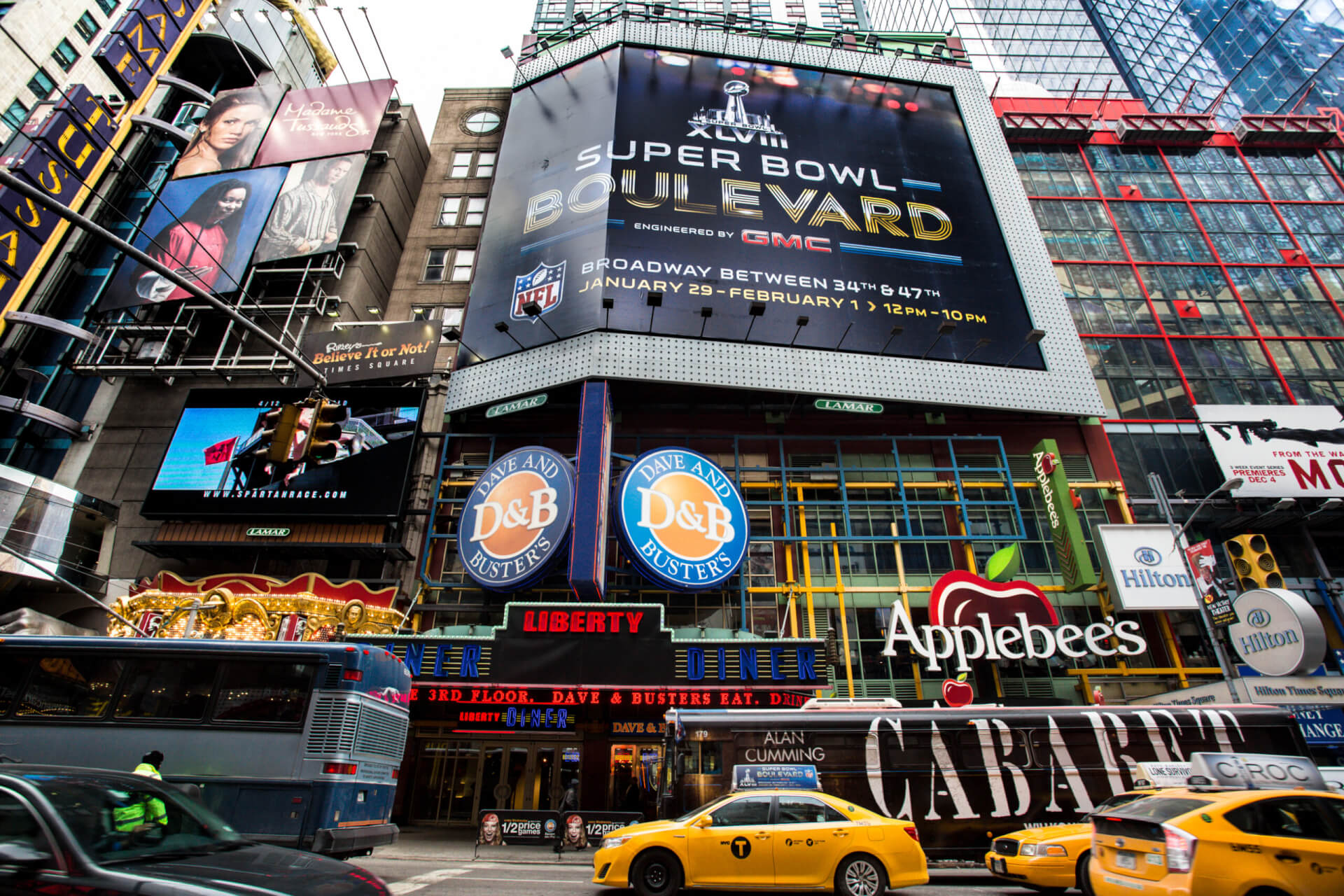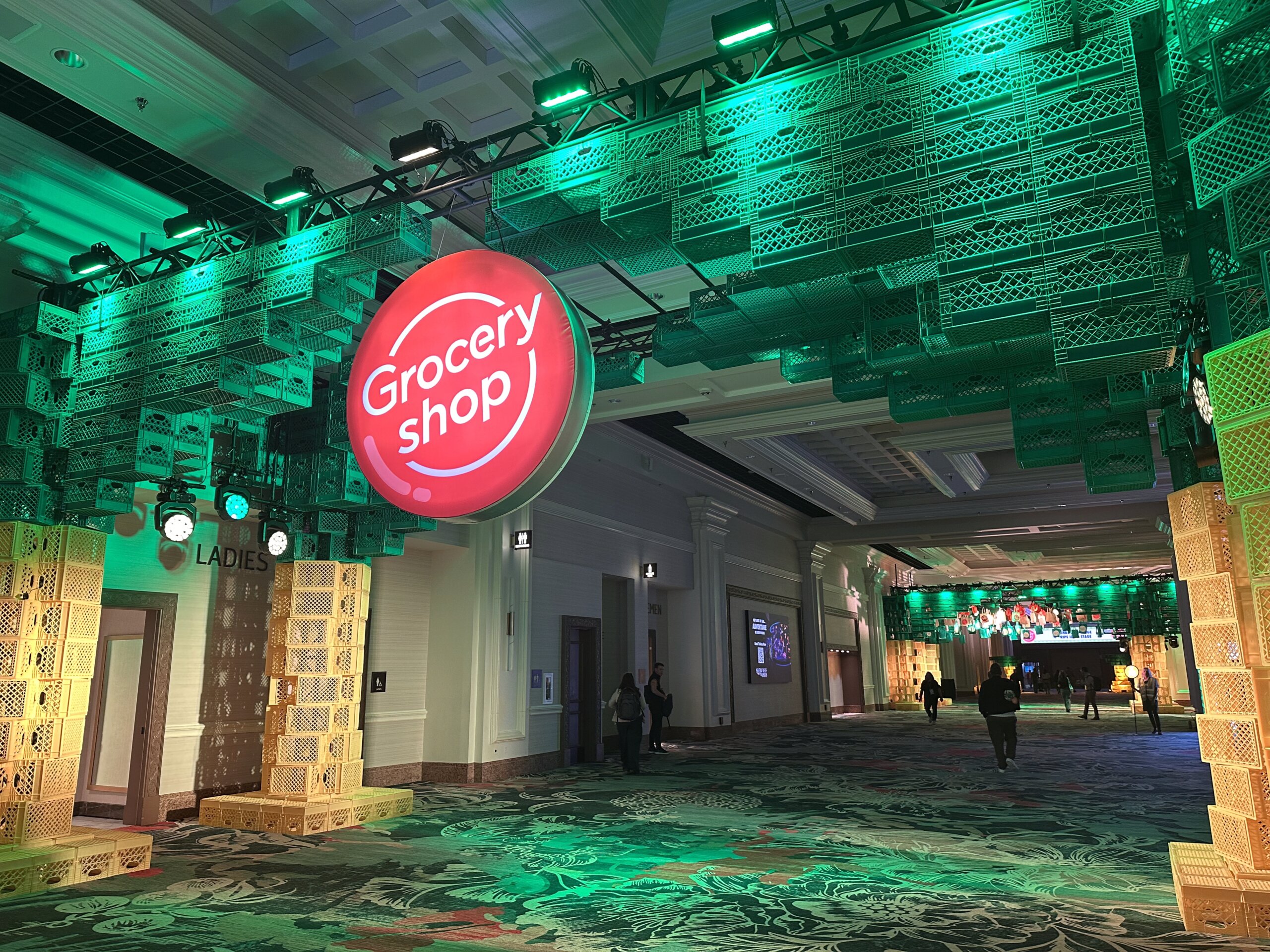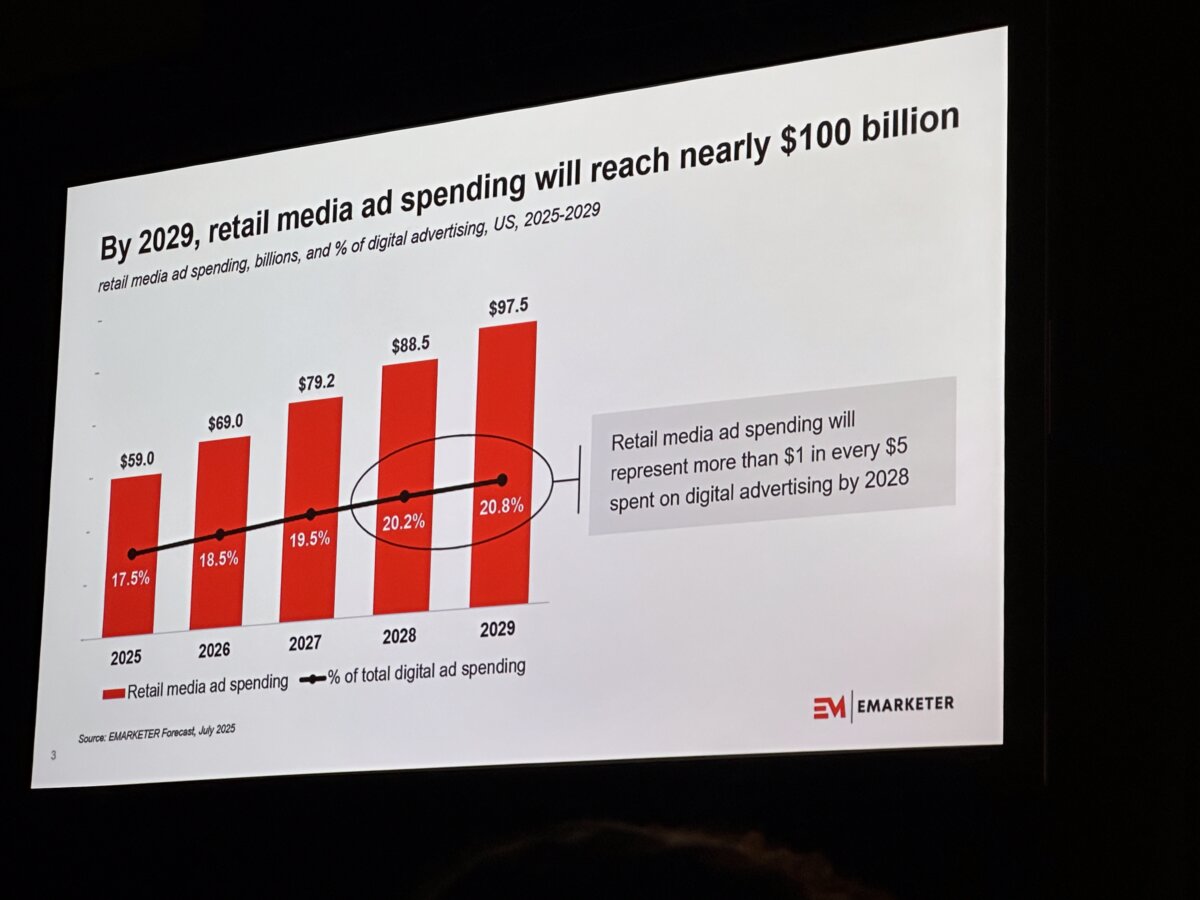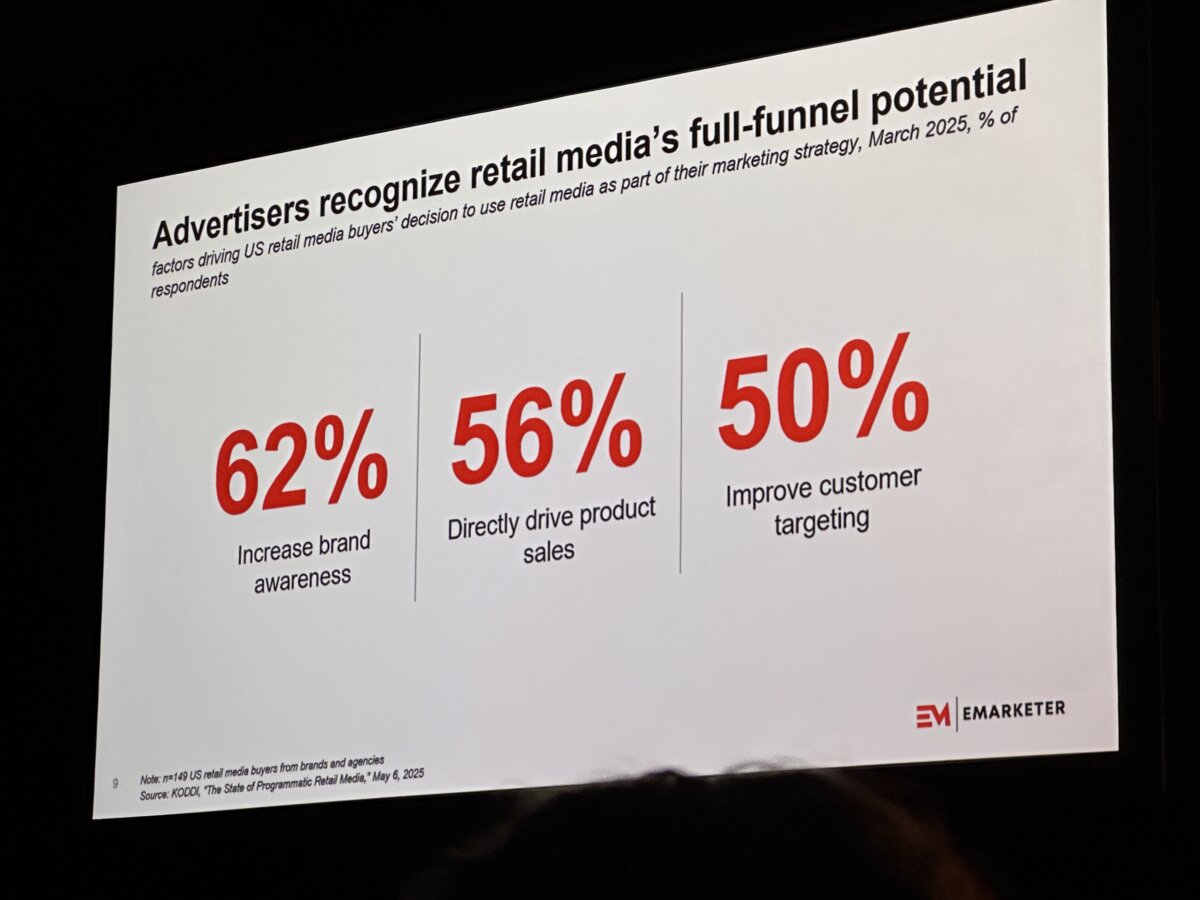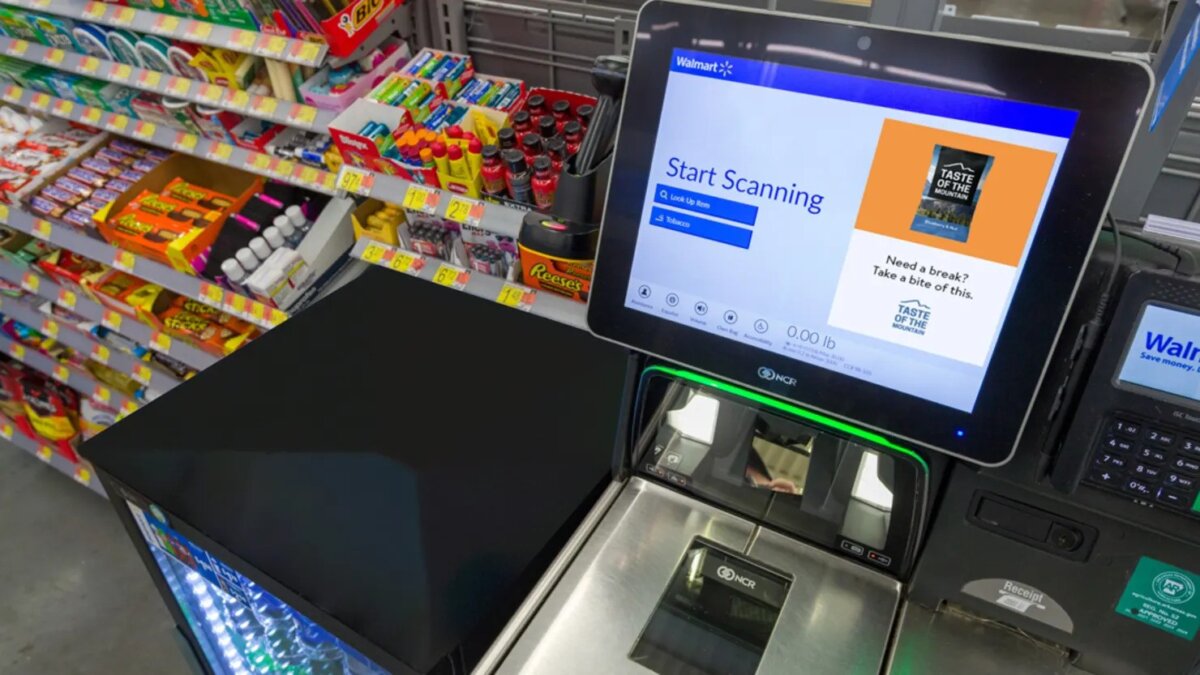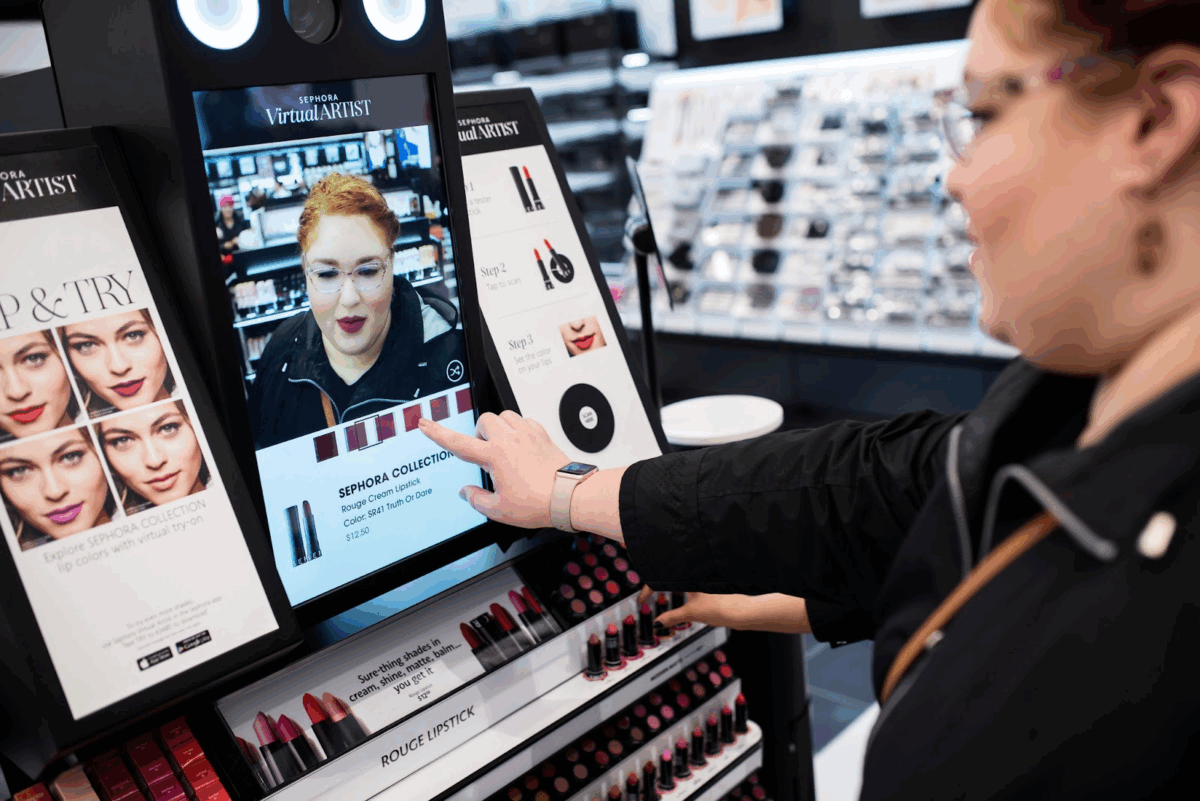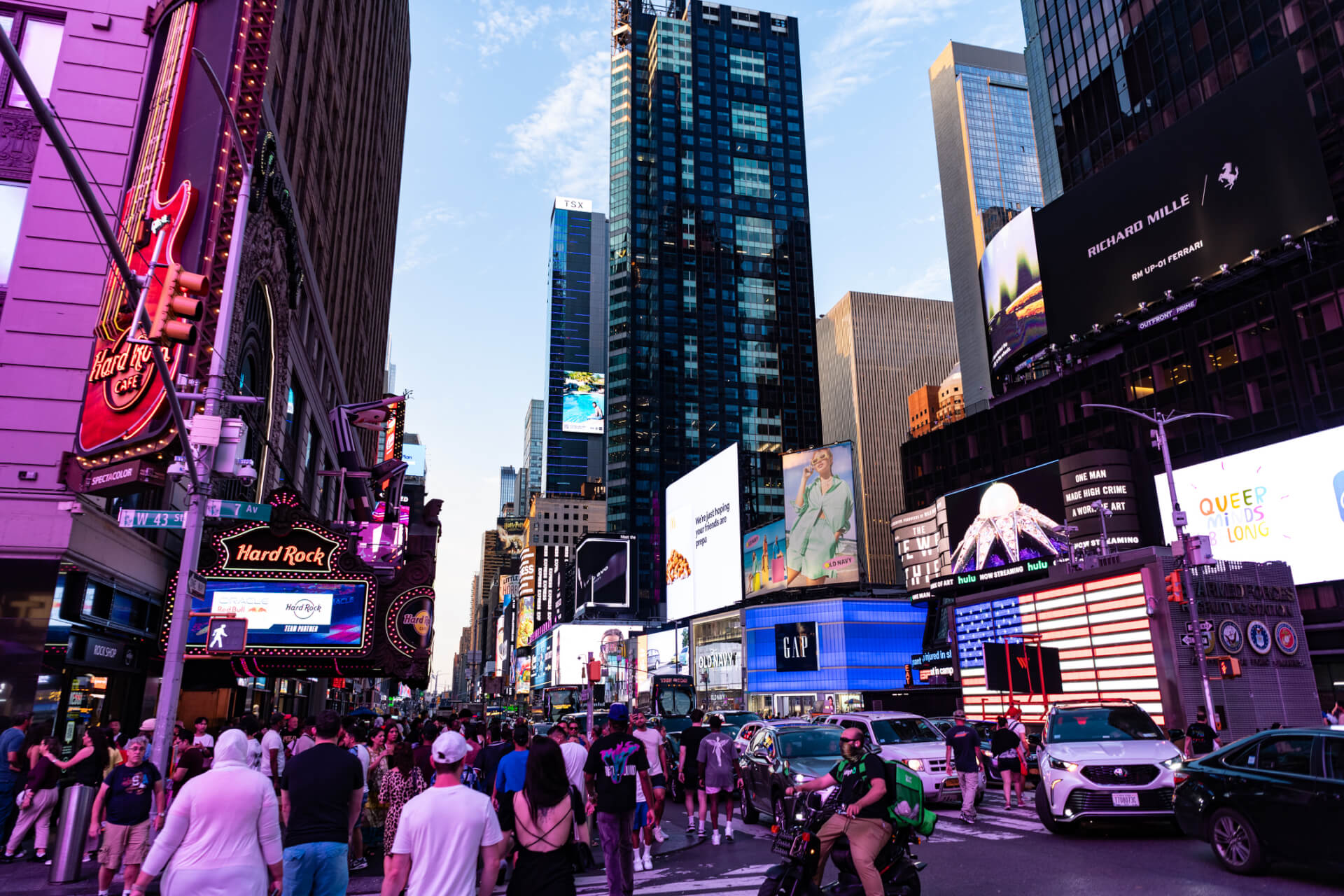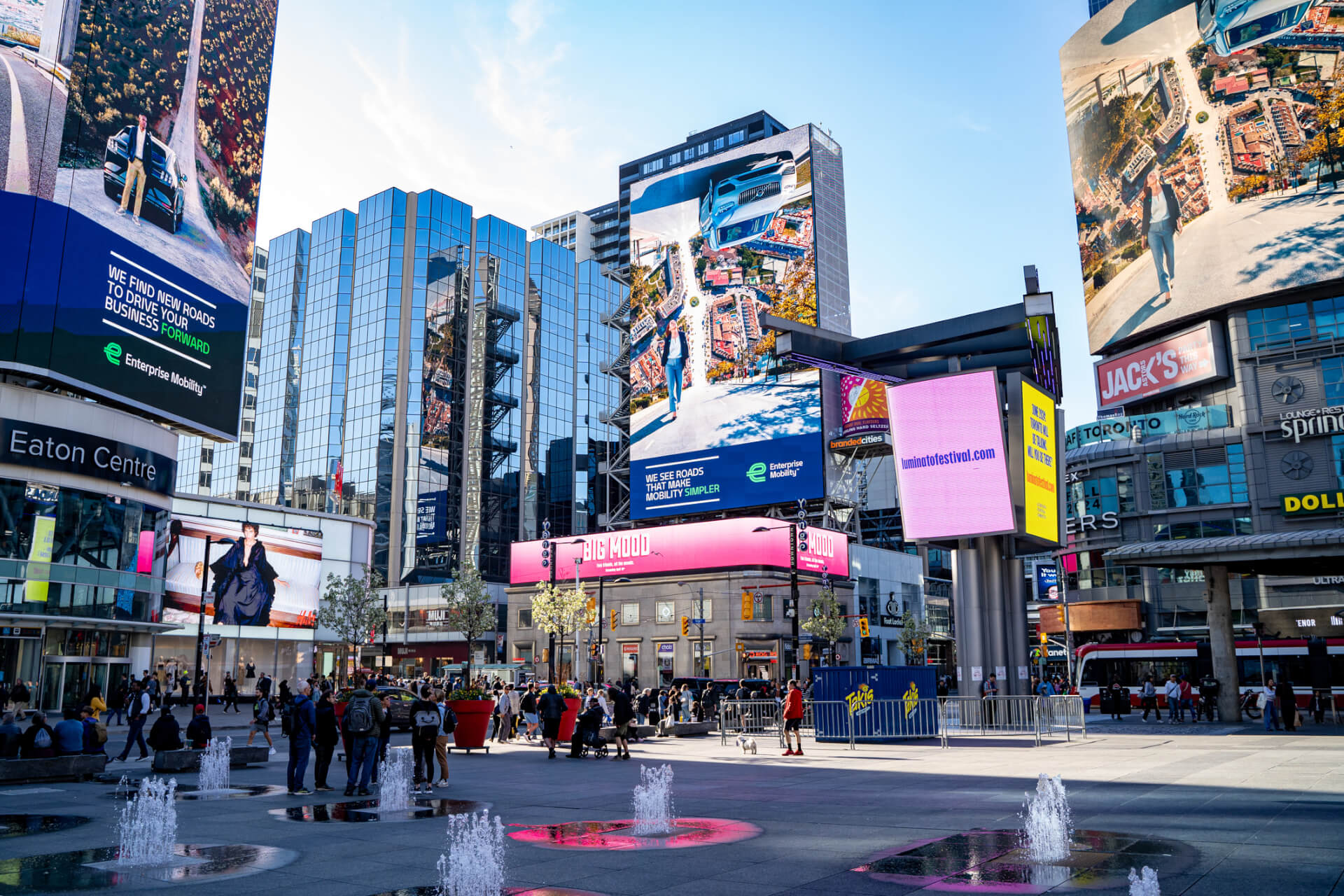| October 11, 2021
OOH strategies to amplify your Big Game ad campaign
The final showdown of the football season is more than just a sporting event—it’s a cultural phenomenon that influences everything from recipes and social gatherings to music, fashion, politics, and, of course, advertising.
The Big Game’s TV ads have become an event unto themselves, and a significant draw of viewers. In fact, 46% of viewers are more excited about the commercials than the game itself.
Last year, the Big Game was the most-watched broadcast in history, with an average of 123 million viewers across all platforms. The increased attention to advertising during the event is a golden opportunity for brands seeking visibility, but TV campaigns aren’t the only way to capitalize on the buzz.
By pairing the wide reach of TV with the targeted precision and real-world impact of out-of-home (OOH) advertising, brands can create a campaign that drives both awareness and action.
The strategic advantage of OOH advertising
Airtime during the Big Game is highly coveted, and it doesn’t come cheap.
While the Big Game has long been considered the pinnacle of advertising, times are changing. Advertisers face challenges beyond reaching consumers—they must find a way to cut through the noise and leave a lasting impression. Consumers want to build a relationship with a brand before they buy, which is difficult to achieve with a single 30-second ad.
True customer loyalty is fostered through consistent interactions with a brand across multiple touchpoints. Research from Qualtrics tells us that it takes 5-7 impressions to make a lasting impact and build brand awareness. This is why the most effective campaigns adopt an omnichannel approach.
Brands are increasingly turning to OOH for its unique ability to deliver targeted messaging based on location and context, helping create truly immersive customer experiences.
Whether or not you plan to invest in airtime, integrating OOH into your campaign planning will only enhance its effectiveness, amplify your reach, and inspire consumers to take action.
Turn game-day buzz into long-term brand impact
While game-time ads still make an impression, their overall impact is short-lived. Reaching audiences—especially younger ones like Gen Z—requires more than just a TV commercial. With streaming platforms like Paramount+ offering interactive, targeted ad opportunities, the shift to streaming is reshaping how brands engage consumers, and digital out-of home (DOOH) is leading the way.
Recent research measuring the impact of a 30-second Super Bowl commercial against a month-long DOOH campaign found that:
- DOOH delivers 7.5X greater reach and
- 10X better CPM value in the top 25 U.S. markets.
With nearly 1 billion impressions at a fraction of the cost, DOOH offers unmatched reach and value, far surpassing the Super Bowl’s estimated 123 million viewers.
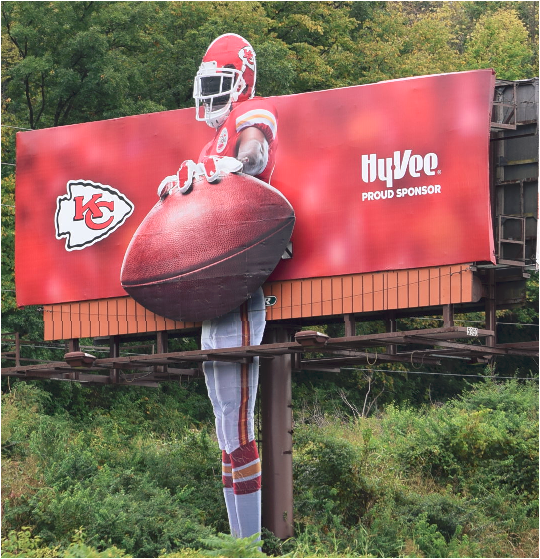
Research from the OAAA and The Harris Poll demonstrates DOOH’s unmatched ability to engage consumers and spur them to action:
- 76% of consumers say a DOOH ad recently prompted them to take action
- 74% of mobile users acted on their devices after seeing a DOOH ad
What’s more, DOOH has the highest ad recall of any major media, peaking at 86%, further proof that ad campaigns that incorporate OOH are more likely to leave a lasting impression.
Connecting with consumers through omnichannel campaigns
Today’s consumers expect seamless brand interactions across all channels. An omnichannel strategy helps you connect with your audience wherever they consume content, creating a more immersive brand experience.
Brands seeking to maximize the impact of their advertising efforts around the Big Game should consider a comprehensive, omnichannel approach that includes pre-game OOH, real-time updates, and post-game messaging.
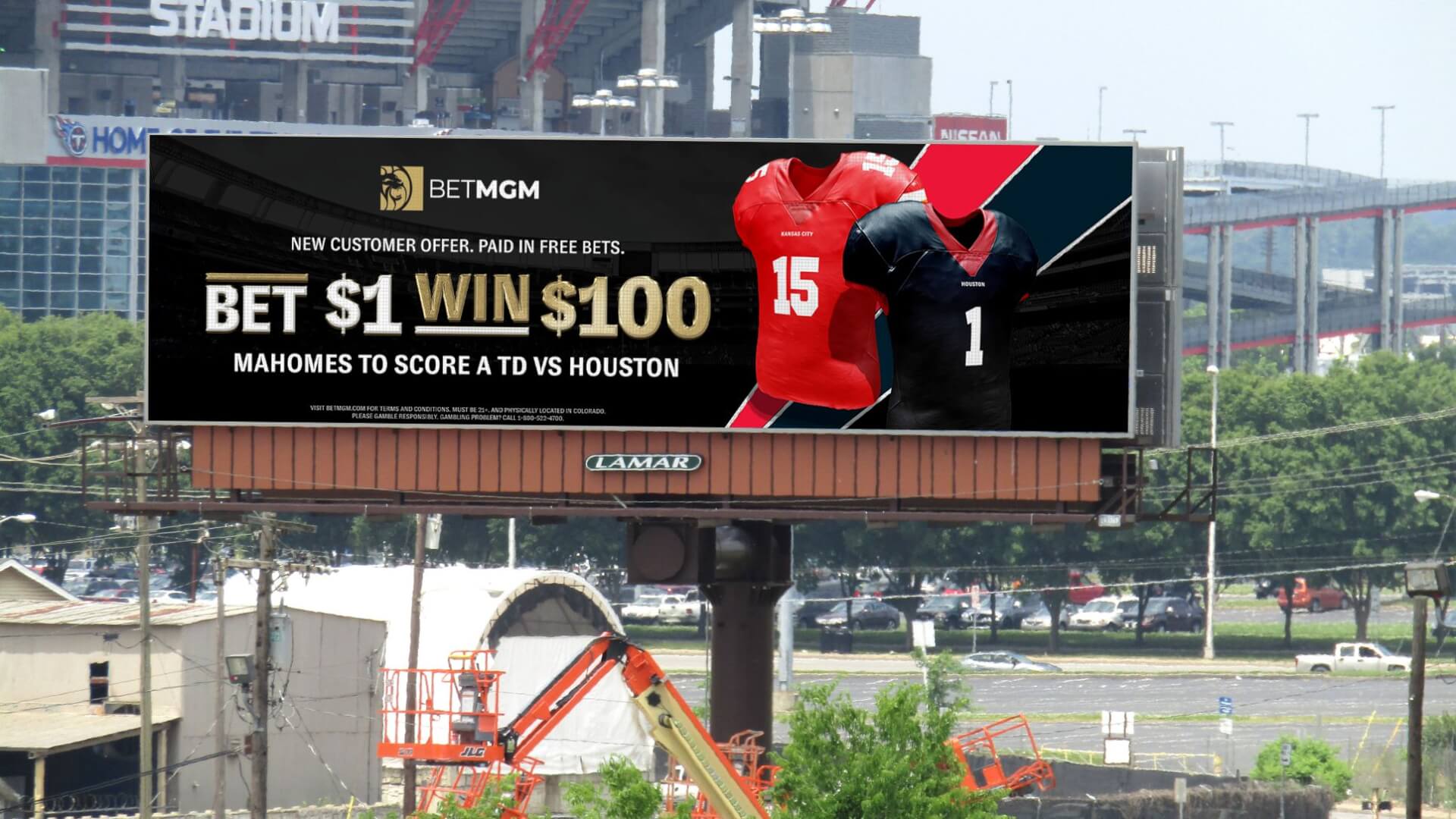
A savvy omnichannel strategy could include updating DOOH ads in real-time to highlight product availability in nearby stores or integrating social media elements to boost online engagement, especially among younger fans. For example, QR codes on OOH ads can direct consumers to online offers, bridging the gap between physical and digital spaces.
A report from the OAAA found OOH ads can amplify the reach of other major media channels to more than 90 percent. Using OOH alongside TV, brands can extend their reach and create an immersive experience that converts consumers into loyal customers.
How local businesses can benefit from DOOH
For local businesses, major events bring a wave of new faces—not just stadium-goers but also tourists eager to join in the festivities. To make the most of this influx, businesses should aim to engage consumers from touchdown to takeoff, and every moment in between.
This creates a prime opportunity to leverage local OOH advertising—like kiosks and digital billboards—at high-traffic locations like airports, transportation hubs, and popular tourist spots.
By connecting with customers as they arrive, you engage them at the perfect moment—when they’re still making plans and deciding where to go. It’s a prime opportunity to influence their decisions and direct them to your business.
Local bars, restaurants, and hotels can boost foot traffic by hosting a viewing party or offering promotions like discounts, free giveaways, or special menu items. OOH can help spread the word and draw people in.
The dynamic nature of sports events means that things can change at a moment’s notice. Programmatic digital out-of-home (pDOOH) allows local businesses to sync their content with live game updates or countdowns so everyone feels like they’re part of the action.
OOH’s sustained, location-based advertising capabilities help local businesses continue to capture attention even after the game is over, capitalizing on the crowds and creating a lasting impression.
Amplify your brand during major sporting events and beyond
As consumer engagement with ads evolves, OOH offers a powerful way to meet these new expectations. With OOH, you can go beyond the limits of a 30-second TV spot and tap into opportunities to expand your reach and connect with your audience wherever they are.
Ready to revamp your advertising campaign for next year’s Big Game? Get started with programmatic DOOH!
